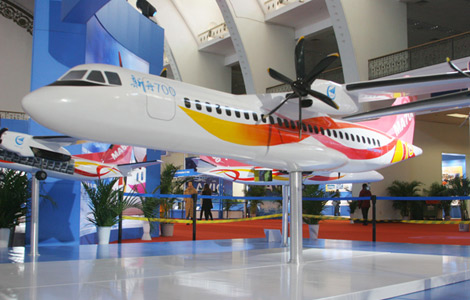Taking a humane look at cosmetics
Updated: 2013-12-20 08:48
By Xu Wei and Zhang Lei in Beijing (China Daily)
|
||||||||
|
|
Search for alternatives
The EU ban on animal testing has forced producers to accelerate research into alternative technologies. The move is unlikely to have an immediate impact on companies with production units in China, though, because products tested before the ban came into force will remain on the shelves in Europe.
L'Oreal, which recently expanded a factory in Hubei province into its largest production base in the Asia-Pacific region, has developed a Chinese EpiSkin model, a facsimile of human skin constructed from Asian keratinocytes, the dominant cells in the outer layer of the skin.
In a news release, the company said EpiSkin can provide solid technical support for the new EU regulations because it can be used as a replacement for human and animal tissue in some tests, especially those related to corrosion and irritation of the skin. In Europe, the product has already been certified for use.
In 2011, the CFDA embarked on a project to identify alternatives to animal testing.
The project, headed by He Zhengming, is examining the possibility of setting up a special body to research alternatives to toxicological tests on animals. The group also reports on the latest developments in ongoing research methods and the application of alternative research and testing, plus conditions in laboratories.
Both He and the CFDA declined invitations to be interviewed on the project's latest findings.
Jiao, the expert from Guangdong Entry Exit Inspection and Quarantine Bureau, said that the alternative methods have drawbacks. "The methods are still immature in terms of testing new ingredients in cosmetics, especially the methods of testing for chronic diseases," she said.

 Climbers soar to new heights
Climbers soar to new heights
 Reading China's future through its past
Reading China's future through its past
 AVIC unveils plan for next-generation regional aircraft
AVIC unveils plan for next-generation regional aircraft
 Yanukovich offers Ukraine protesters nothing
Yanukovich offers Ukraine protesters nothing
 Former NBA player may coach in DPRK
Former NBA player may coach in DPRK
 Misses International shine in Tokyo
Misses International shine in Tokyo
 Parents urged to supervise children's TV-viewing habits
Parents urged to supervise children's TV-viewing habits
 Jazzing up Beijing
Jazzing up Beijing
Most Viewed
Editor's Picks

|

|

|

|

|

|
Today's Top News
88 injured in London theater collapse
'Deportation relief' important to Asian Americans
Reading China's future through its past
New US ambassador 'must find right mix'
'Mutual interests beat differences'
More help on way for foreign media
200 foreigners expelled in 2013
Putin to pardon jailed tycoon
US Weekly

|

|








